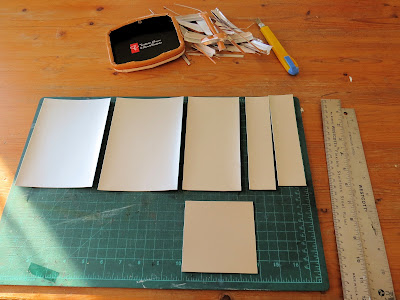It has been a sad summer where I have had to take a break from the studio due to a terminal illness diagnosis that my aged mother was given in July. Unfortunately the illness took on a very aggressive acceleration soon after and I travelled a 1000 km and arrived in time to spend several days with her before her passing. I decided to stay longer to care for my surviving father until the family can resettle him in an assisted living facility in the same community as three of my siblings.
Just before I had to travel for all of this I did spend time in the studio and was able to produce around 20 drypoint prints on paper of a landscape study I had sketched earlier.
The scene depicted is from my roamings to some locations along Lake Superior about four hours east of where I reside. This is where there is a pristine national park here in Canada on Lake Superior called Pukaskwa. The study is from a cove along the shore of the park that is dotted with inlets and small islands.
The printed image size is 10mx 13.5 cm and I used a thin acrylic plate to scribe the lines using a homemade needle (math set compass needle tip set into a mechanical pencil holder.) Plate tone and careful removal of mix of prussian blue safewash with a little carbon black ink using tissue and cotton swab was utilized to create the dramatic sky.
In the meantime I told the director of the Hospice that took care of my mother I would donate a framed work to display in their facility in honour of her. The work is in development at present and my plans are for it to be a large drypoint combined with a monoprint background.




















































.jpg)


